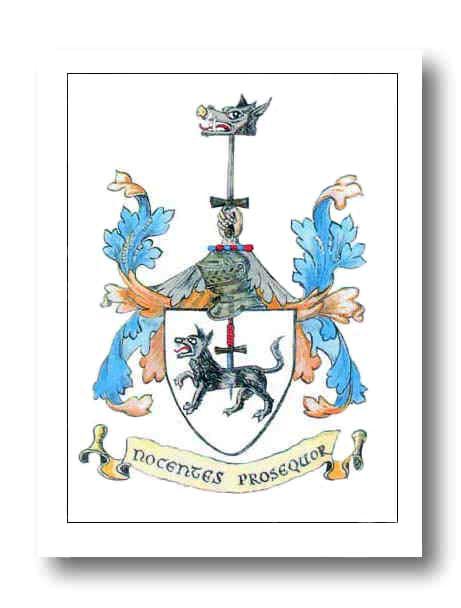

This page contains information on descendants and ancestors of James and Thomas Dunbrack, who immigrated from Rothes, Morayshire, Scotland to the New World in the middle to late 1700s. James who was born in 1727 settled in Halifax, Nova Scotia, while Thomas, born 1731, settled in Demarara, British Guiana. James had many descendants in Nova Scotia and later in the United States and Australia. Thomas' son Charles left South America and moved to Nova Scotia and had many descendants.
The name is probably derived from the Gaelic, Druim breac, which means "spotted ridge." In the early sources, the name is often spelled Drumbreck or Drumbrek.The alternative is An Dun Breac, which implies the existence of a hill fort (Dun), which seems unlikely given the terrain. Other Dumbreck place names in Scotland vary between Dumbreck and Drumbreck.
We believe Philip de Dumbreck's
grandson John Dumbreck gained lands at Orton-on-Spey in Morayshire, about 50 miles west of Dumbreck:
His direct descendants remained at Orton House for several generations until the land was sold to the Innes's. Later generations remained in nearby Rothes until at least the late 1700s.
For additional information and history, visit the Dumbreck Family Webpage run by Rod Dumbreck, my 7th cousin.
Entering information into the database is an ongoing process. I welcome additions and corrections on any aspect of the site. If your family is represented here, please check the dates and locations and other information. I would be happy to add more people, or to remove information for privacy reasons. I believe all the information is otherwise available in public records. I would also be happy to post photographs of Dunbrack family members and related places, homes, gravestones, etc.
For a summary of the family history, here is a pedigree tree that includes all of my ancestors that I have information on. If you would like such a tree with you or someone else at the root, please let me know and I can generate one very easily.
Please e-mail me with any photos, additions, corrections, deletions, etc. at Roland.Dunbrack@fccc.edu. See further contact information below.
The Surname Index
The Full Name Index
Sources
It is however preferable to have some association with the tartan, rather than picking one randomly. Many Dunbracks and Dumbrecks have other family lines in their backgrounds that include families with tartans. For instance, the names Innes and MacDougall appear in our family histories. These are certainly good choices.
But I would like to propose an alternative. As I was looking for a tartan for my kilt, I looked at many possible family tartans, and some of the more appropriate ones were, well, rather bright (including one bright orange, and another bright red). An alternative to family tartans exists in the district tartans of various cities and shires of Scotland. The Aberdeen tartan would be most appropriate but it is also rather bright red with thin pink stripes.
But with the help of my kiltmaker, Celtic Craft Centre, in Edinburgh and San Francisco, I discovered the Grampian District Tartan, named after the Grampian region of Scotland that runs from Aberdeen nearly to Inverness. This area includes both Dumbreck and Orton. It is also a very nice tartan in blue and green.
To model the tartan, here is a picture
of me in my kilt, taken by Rod Dumbreck on a visit to Scotland
in January 2002.
Roland L. Dunbrack, Jr.
Philadelphia PA 19148 USA
Roland.Dunbrack@fccc.edu
Last edited: January 22, 2021